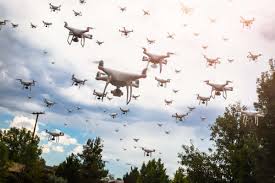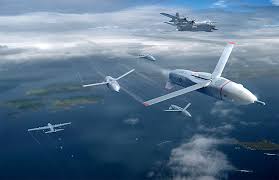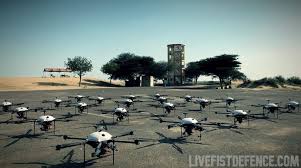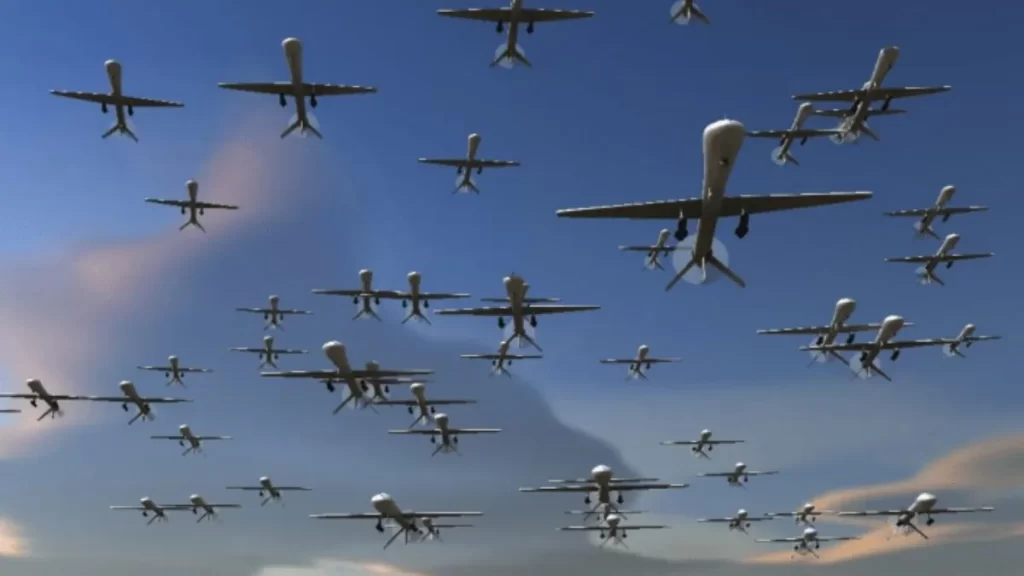Air Force Next-Generation Defense Technology

Introduction
The Air Force’s swarm drone program represents a transformative approach to aerial warfare. Initiated in response to emerging battlefield challenges, this technology leverages the power of multiple autonomous drones working in concert. Each drone costs significantly less than traditional aircraft, yet together they create a formidable military capability that can outmaneuver and overwhelm sophisticated defense systems.
System Overview

The swarm system deploys dozens or even hundreds of small, autonomous drones that operate cohesively. Each drone typically measures 2-3 feet in length, carries various sensors and possible payloads, and can operate for several hours. The swarm’s strength lies in its distributed nature – if several drones are lost, the swarm reconfigures automatically and continues its mission without significant degradation in capability.
Technical Features
Advanced technologies enable swarm operations:

- AI-driven flight control allows drones to maintain formation while avoiding collisions
- Mesh networking provides resilient communication with 256-bit encryption
- Each drone carries multiple sensors including electro-optical, infrared, and radar
- Autonomous target recognition capabilities reduce operator workload
- Solar-electric hybrid propulsion systems extend mission duration
- Modular payload bays allow for mission-specific equipment
Specific Mission Examples
The system demonstrates versatility across multiple mission types:
- Penetration Missions: 200+ drones overwhelm air defenses by approaching from multiple vectors
- Reconnaissance: Swarms create detailed battlefield maps by combining data from distributed sensors
- Search and Rescue: Drones cover large areas quickly, using infrared sensors to locate missing personnel
- Base Defense: Autonomous patrols detect and track potential threats around military installations
- Electronic Warfare: Coordinated jamming from multiple drones disrupts enemy communication systems
Development Timeline
2020-2021: Initial concept development and small-scale testing
2022: First successful demonstration of 10-drone autonomous swarm
2023: Integration of advanced AI and expansion to 50-drone swarms
2024: Field testing of large-scale swarms (100+ drones)
2025: Planned initial operational capability
Future: Ongoing development of enhanced capabilities and larger swarms
Integration Capabilities
The system interfaces with existing military infrastructure through:
- Standard NATO communication protocols
- Secure datalinks with ground control stations
- Real-time integration with air traffic management systems
- Compatibility with current military command and control networks
- Automated coordination with manned aircraft operations

Future Development
Research continues in several key areas:
- Advanced swarm behaviors inspired by biological systems
- Enhanced autonomous decision-making capabilities
- Extended range through improved power systems
- Development of counter-swarm defense mechanisms
- Integration of advanced weapon systems
- Improved swarm resilience against electronic warfare
Conclusion

The US Air Force’s swarm drone system demonstrates the future of aerial warfare. By combining autonomous operation, distributed sensing, and coordinated action, these systems provide military commanders with unprecedented capabilities while reducing risk to personnel and improving cost-effectiveness.
